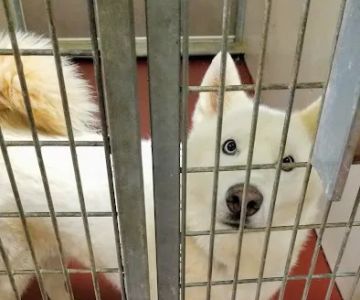How to Prevent Dog Dental Disease
As a pet owner, one of the most important aspects of ensuring your dog’s health is maintaining good oral hygiene. When I first brought my dog home, I was surprised to learn that dogs can suffer from dental disease just like humans. Over time, I became more aware of how vital it is to prevent dog dental disease, and the earlier I started, the better the results were. In this article, I’ll share the most effective ways to prevent dog dental disease based on personal experience, research, and expert recommendations.
1. Understanding Dog Dental Disease
Before diving into how to prevent dental issues, it’s important to understand why dog dental disease happens. Dental disease in dogs is primarily caused by the accumulation of plaque and tartar on their teeth. If left untreated, it can lead to gingivitis, periodontal disease, and even tooth loss. I learned that dogs, especially those over three years old, are highly susceptible to these issues if their teeth aren’t properly cared for. That’s when I started incorporating dental care into my dog’s daily routine.

845 W Ridge Rd, Gainesville, GA 30501, USA
See Details1.1 Early Signs of Dental Disease
Recognizing the signs of dental disease early on is key. I remember when I first noticed my dog’s bad breath, which I later learned was a warning sign. Other symptoms include yellow or brown tartar on the teeth, bleeding gums, and difficulty chewing. If your dog starts showing these signs, it’s time to take action and prevent the problem from worsening.
2. Brushing Your Dog’s Teeth Regularly
Just like humans, brushing your dog’s teeth is one of the most effective ways to prevent dental disease. When I first tried brushing my dog’s teeth, it seemed daunting. But with the right tools and patience, it became a regular and easy part of our routine. Using a dog-specific toothbrush and toothpaste is crucial, as human toothpaste can be harmful to dogs. Aim to brush your dog’s teeth at least three times a week, but daily brushing is ideal for maximum prevention.
2.1 Choosing the Right Toothbrush and Toothpaste
Not all toothbrushes and toothpaste are created equal. I started by choosing a soft-bristled toothbrush designed specifically for dogs. These brushes come in various sizes depending on your dog’s breed and mouth size. The toothpaste I use is a pet-safe formula, usually flavored with chicken or peanut butter—flavors that my dog enjoys. It’s important to note that you should never use human toothpaste, as it contains ingredients like fluoride that can be toxic to dogs.
2.2 Proper Brushing Technique
When I first started brushing my dog’s teeth, I followed the recommendations from my vet on proper technique. It’s best to gently lift your dog’s lips and brush in small, circular motions. Focusing on the outer surfaces of the teeth is more than enough, as plaque primarily builds up there. I also found that taking a calm and patient approach, offering praise and treats afterward, helped my dog associate teeth brushing with something positive.
3. Dental Chews and Toys
In addition to brushing, providing your dog with dental chews and toys can be a great way to reduce plaque buildup. Over the years, I’ve discovered that certain dental chews and toys help clean teeth by scrubbing away plaque as my dog chews. These items are a great supplement to regular brushing. Not only are they effective, but they also keep my dog entertained and satisfied for long periods.
3.1 Best Dental Chews for Dogs
When choosing dental chews, I always look for products that are both safe and effective. The best dental chews are those that help break down plaque and tartar without being too hard on your dog’s teeth. Brands like Greenies and Pedigree have some excellent options that are approved by veterinarians. However, always ensure the size and texture are appropriate for your dog’s age and breed to prevent choking hazards.
3.2 Interactive Dental Toys
Interactive dental toys are another great way to prevent dental disease. These toys are designed to encourage chewing, which can help clean your dog’s teeth. My dog loves a good chew toy, and using one that’s designed specifically for dental health has become part of our regular routine. Just remember to replace them when they show signs of wear and tear to maintain their effectiveness.
4. Regular Veterinary Check-ups
No matter how well you care for your dog’s teeth, regular veterinary check-ups are essential for catching any dental issues early. I make sure to take my dog to the vet for a dental check-up at least once a year. During these visits, the vet checks for signs of gum disease, loose teeth, and plaque buildup that might be harder to see at home.
4.1 Professional Cleanings
Sometimes, a professional dental cleaning is necessary to keep your dog’s teeth in top shape. The vet may recommend a professional cleaning if there is significant plaque buildup or if your dog is showing signs of advanced dental disease. While this can be more expensive than regular care, it’s an investment in your dog’s overall health. I’ve found that scheduling regular professional cleanings has helped prevent more serious dental issues down the road.
5. Diet and Nutrition for Healthy Teeth
What your dog eats plays a significant role in their dental health. I learned that feeding my dog high-quality dog food, particularly dry kibble, can help reduce plaque and tartar buildup. Some pet foods are specifically designed to promote oral health, containing ingredients that help clean teeth while they chew. Additionally, I make sure my dog has access to fresh water throughout the day to help rinse away food particles and bacteria.
5.1 Choosing the Right Dog Food for Dental Health
When selecting food for your dog, look for products that are endorsed by veterinary professionals for dental health. These foods often have a texture that helps remove plaque as your dog chews. I also make sure to avoid giving my dog sugary treats or human food, which can contribute to dental decay.
6. Monitoring Your Dog’s Oral Health
It’s important to stay vigilant about your dog’s oral health. I regularly inspect my dog’s teeth and gums, looking for signs of swelling, redness, or excessive tartar buildup. Keeping an eye out for changes can help catch problems early before they become serious. If you notice any unusual symptoms, such as bleeding gums, foul odor, or changes in behavior, it’s time to consult with your vet.
6.1 Signs of a Problem
Be on the lookout for signs such as drooling, difficulty eating, or pawing at the mouth. These are often indicators of pain or discomfort, possibly due to dental issues. If your dog shows any of these symptoms, it’s crucial to seek professional help as soon as possible.










